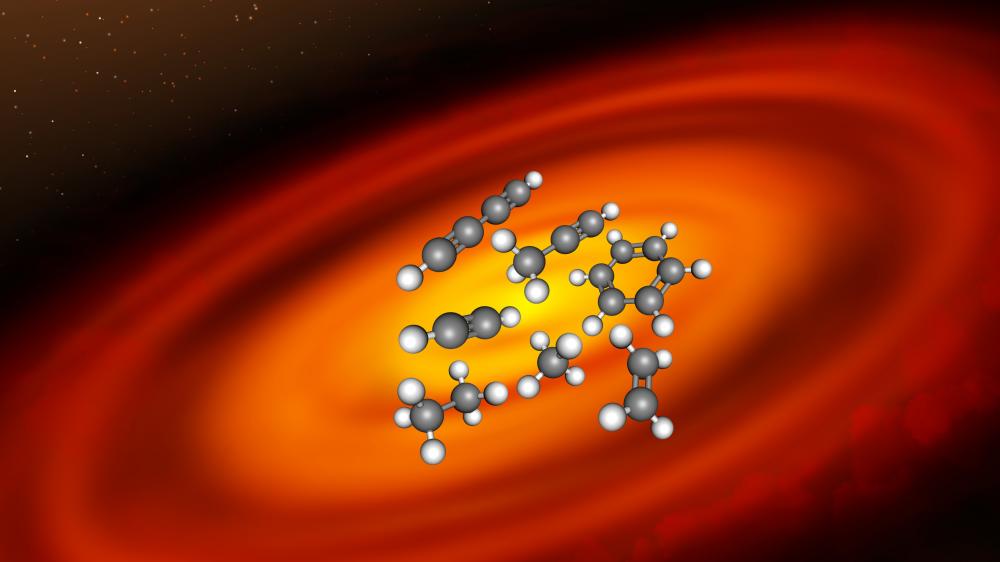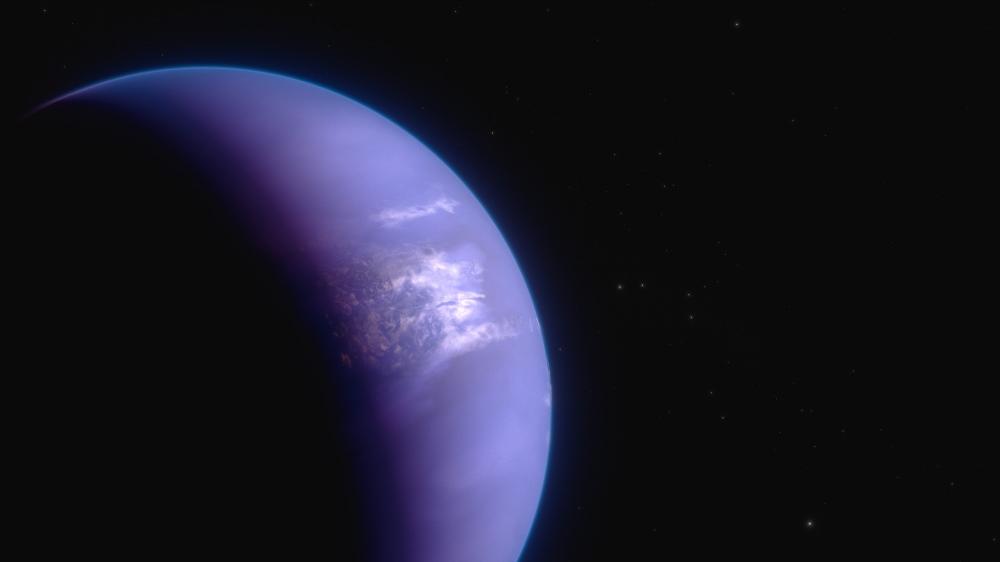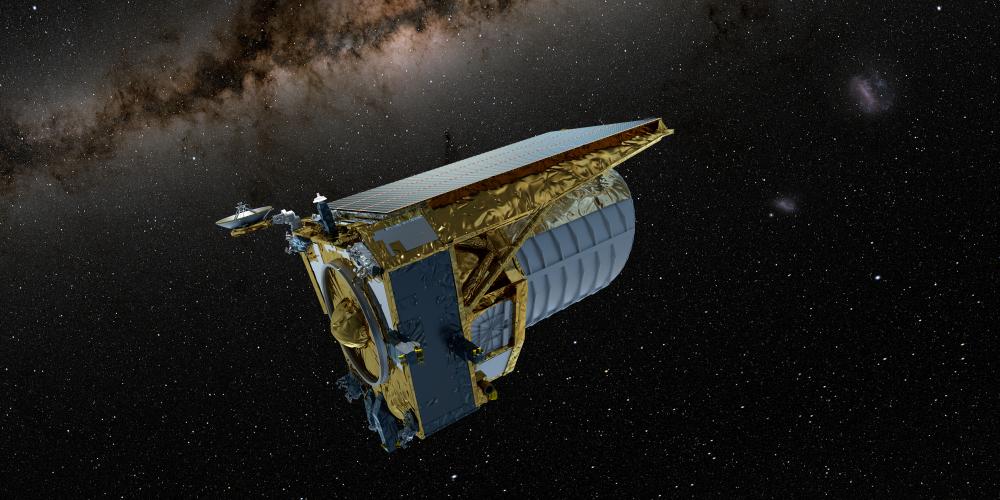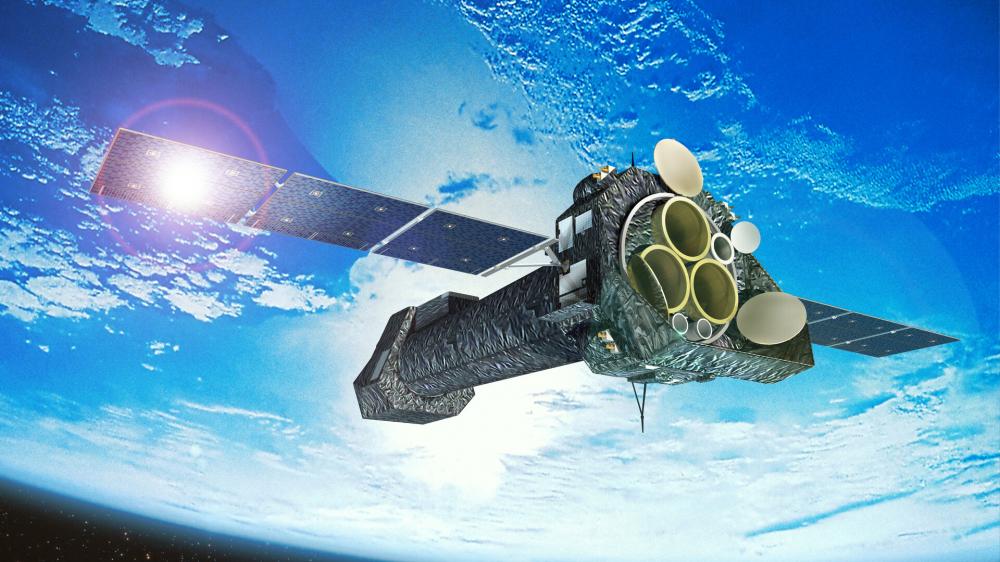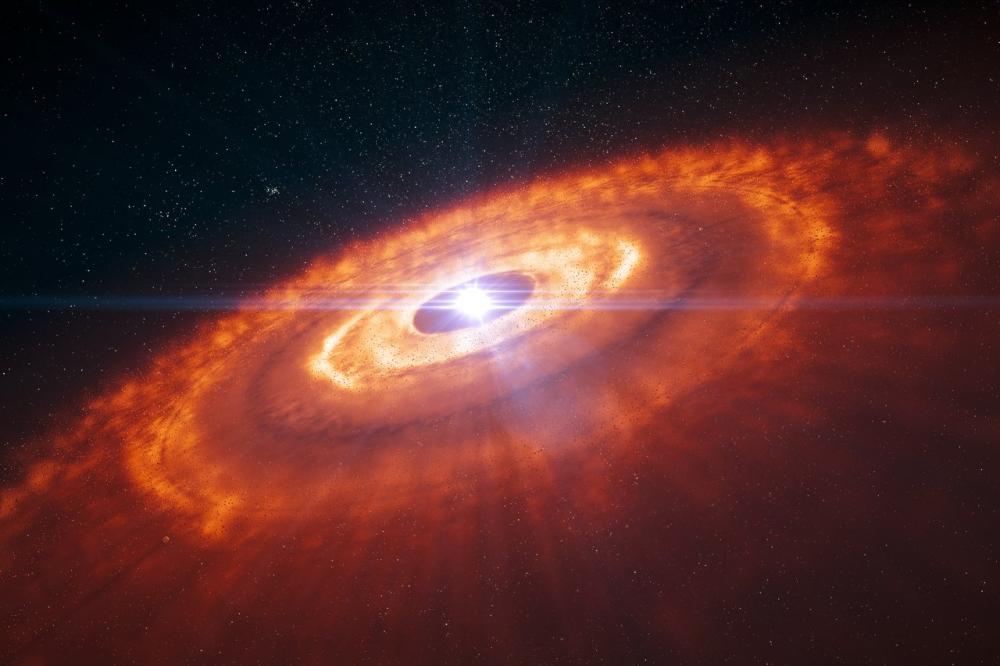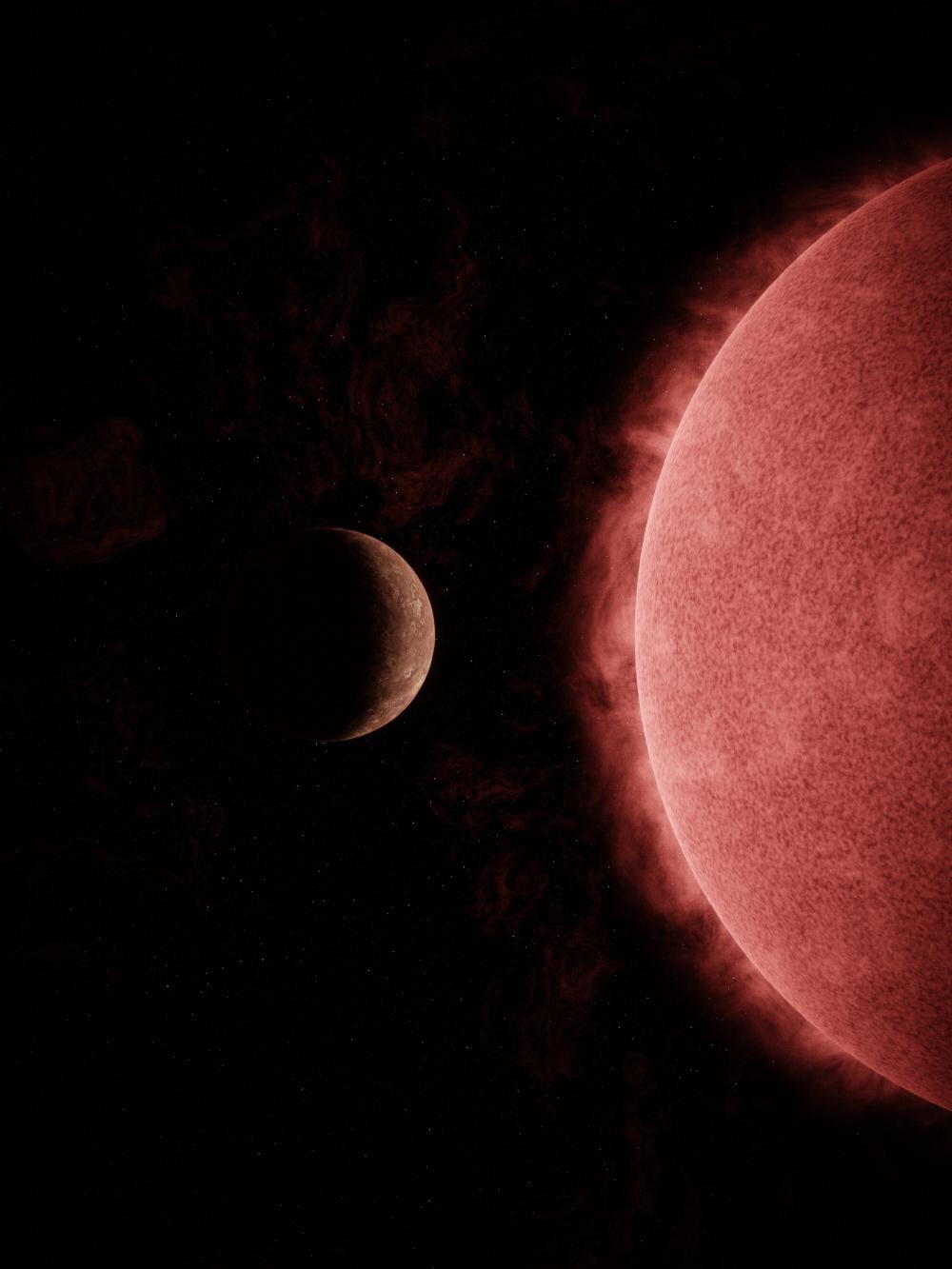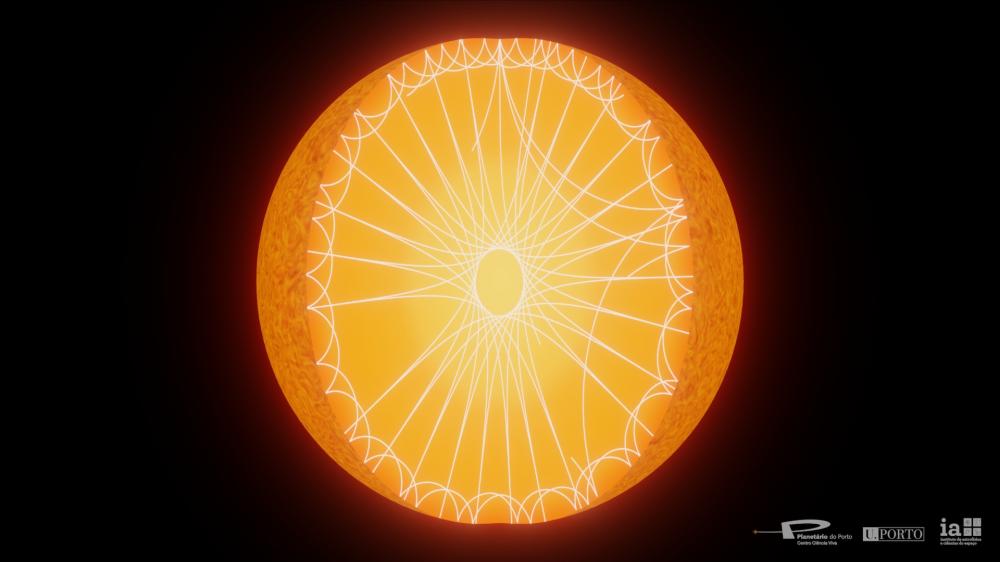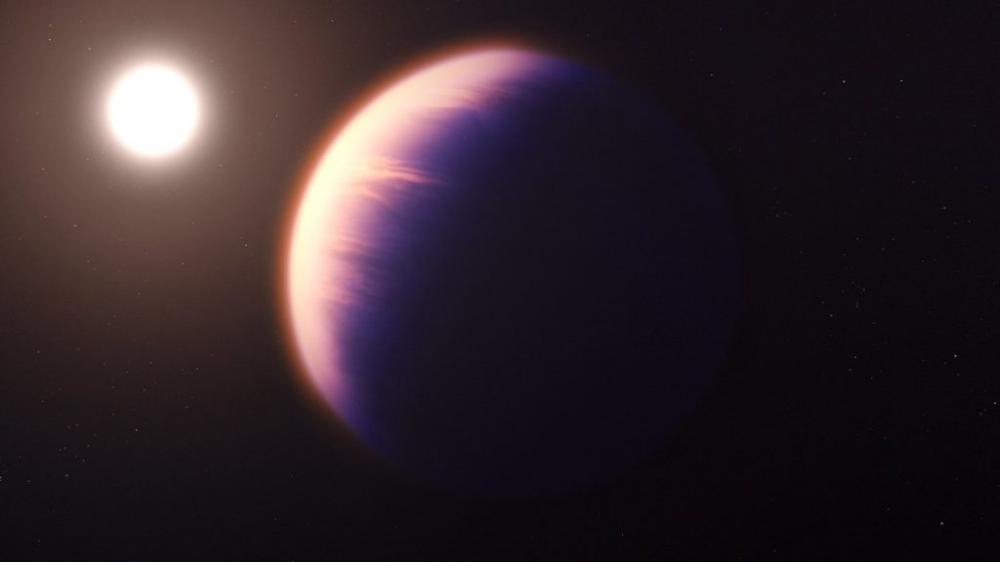Highlights 2024
An international research team, including scientists from CEA, has just revealed the chemical composition of a disk of matter rotating around a young star, where new planets are forming. The results reveal the largest number of carbonaceous molecules ever observed in such a disk, including some detected for the first time outside our solar system. These findings have implications for the potential composition of planets forming around this star. These results, published in the journal Science on Thursday June 6, were obtained as part of the guaranteed time program of the MIRI instrument, developed by a consortium of laboratories in Europe and the USA.
An international team of researchers, including members from CEA, utilized NASA's James Webb Space Telescope to map the weather of the hot gas giant WASP-43 b.
Measurements in mid-infrared obtained with the MIRI instrument, combined with 3D climate models and other observations, suggest the presence of thick and dense clouds on the night side, clear skies on the day side, and equatorial winds reaching up to 8,000 km/h, mixing atmospheric gases around the planet.
This study showcases advancements in exoplanet science enabled by the unique capabilities of JWST to measure temperature variations and detect atmospheric gases hundreds of light-years away.
This study is published in the prestigious journal Nature Astronomy.
The Euclid collaboration today publishes five reference papers on the mission and ten scientific papers based on the first images unveiled to the public in November 2023, as well as the new images presented today by ESA.
This phase of preliminary observations conducted last fall provides a glimpse into the telescope's exceptional performance. The first scientific papers already reveal the discovery of newly formed rogue planets, the richness of the globular cluster population around nearby galaxies, the discovery of new low-surface-brightness dwarf galaxies in a neighboring galaxy cluster, the distribution of dark matter and intra-cluster light in galaxy clusters, and dozens of massive galaxies dating back to a time when the Universe was only 5% of its current age.
In parallel with these 15 articles, ESA today unveils five new images based on these observations, once again showcasing the sharpness of Euclid's images and its ability to observe all scales of the Universe from the optical to the near-infrared domain over a wide field of view, more than twice the surface area of the full Moon.
The CEA plays a major role in the entire mission within the Euclid collaboration, from design and implementation to its scientific exploitation over the next six years. The CEA is also heavily involved in this scientific validation program for the telescope set up by ESA. Jean-Charles Cuillandre, an astronomer at the CEA-Irfu Department of Astrophysics, analyzed these first scientific data transmitted by Euclid to create color images and enable their scientific exploitation. He is a co-author of the 10 scientific papers detailing the initial discoveries, including 2 as the first author, one on the Perseus galaxy cluster and the other on image processing.
XMM-Newton's energetic universe joins forces with the Euclid satellite's vision of the sky. A thousand hours of X-ray observations, over a region 40 times the size of the moon, will complement multi-wavelength studies of the cosmic evolution of galaxy clusters. A decisive association to constrain cosmological scenarios and reveal the nature of dark energy.
A team of theorists from the CEA's Astrophysics Department (DAP), working within the Laboratory for Modeling Astrophysical Plasmas (LMPA), have carried out simulations using the CEA's supercomputers, with the aim of understanding the formation of stars and protoplanetary disks. Months of computational work have enabled us to achieve resolutions never achieved before, revealing new details about the formation of these objects.
The simulations yielded two major results: protostars are turbulent from birth, and protoplanetary disks form from material ejected from the star's surface.
These results have been published in Astronomy & Astrophysics: The birth and early evolution of a low-mass protostar and Formation of low-mass protostars and their circumstellar disks.
Although significantly more common in the Universe, ultra-cool dwarf stars remain poorly understood due to their low luminosity. Consequently, our understanding of their planetary population remains limited, even though they represent a substantial fraction of the planets in our Milky Way. It is in this context that the SPECULOOS program was developed, aiming to explore exoplanets around this type of star.
Thanks to this program, an international team of researchers, including the CEA, has just discovered a new planet: SPECULOOS-3 b. Earth-sized, it orbits the ultra-cool dwarf SPECULOOS-3, located 55 light-years away. This discovery marks the second planetary system identified around this type of star, following the famous TRAPPIST-1 system, also detected through this observation program.
The characteristics of SPECULOOS-3 b make it one of the most promising rocky exoplanets for detailed characterization through emission spectroscopy with the JWST's MIRI instrument. Its sensitivity is expected to provide significant constraints on the planet's atmospheric composition or surface mineralogy, if applicable.
This discovery was published in the journal Nature Astronomy.
An international team, including the Astrophysics Department of CEA-Saclay, led by the Instituto de Astrofísica e Ciências do Espaço (IA), utilized one of the world's most advanced spectrographs to detect the smallest "stellar tremors" ever recorded in an orange dwarf star, making it the smallest and coldest star observed to date with confirmed solar oscillations. This study demonstrates that asteroseismology is a powerful technique for studying such stars, opening new perspectives in our understanding of stellar physics and, by extension, exoplanets.
This study is published in the journal Astronomy & Astrophysics Letters: “Expanding the frontiers of cool-dwarf asteroseismology with ESPRESSO: Detection of solar-like oscillations in the K5 dwarf ε Indi”.
The James Webb Space Telescope has produced a new portrait of the atmosphere of exoplanet WASP-39b, a "hot Saturn" some 700 light-years away. After the first near-infrared observations in 2022, which revealed for the first time the presence of sulfur dioxide (SO2) in the atmosphere of an exoplanet, it was observed again in 2023, but this time in the far infrared, using the MIRI spectrometer. This new observation enabled the international research team, including Saclay's Astrophysics Department, to confirm the presence of this molecule in the atmosphere of WASP-39b and to constrain its abundance. This recent study demonstrates that photochemistry shapes the atmosphere of WASP-39b over a wide range of wavelengths.
To unravel this mystery, several teams with diverse skills from the Astrophysics Department had to come together, as the architecture that unites the star to its planet is highly complex. They had to combine a detailed understanding of stellar and planetary physics, exploring their interactions, with a thorough knowledge of the observations made by NASA's Kepler satellite to be able to decipher the data.
The study shows that the observed rarity seems to derive not from observational bias, but rather from physical causes. Tidal effects and magnetism are sufficient to explain qualitatively and quantitatively the migration of nearby planets around fast-rotating stars. Moreover, this migration appears to be dependent on the spectral type (fundamentally linked to mass) of the star. While these results are promising, it is nevertheless necessary to expand the sample size to better constrain scarcity and better understand the mechanisms at play. In particular, this study highlights the importance of considering the spectral type of stars (their masses) if we are to correctly model star-planet interactions.
This work is published in Astronomy & Astrophysics.
The Euclid collaboration today publishes five reference papers on the mission and ten scientific papers based on the first images unveiled to the public in November 2023, as well as the new images presented today by ESA.
This phase of preliminary observations conducted last fall provides a glimpse into the telescope's exceptional performance. The first scientific papers already reveal the discovery of newly formed rogue planets, the richness of the globular cluster population around nearby galaxies, the discovery of new low-surface-brightness dwarf galaxies in a neighboring galaxy cluster, the distribution of dark matter and intra-cluster light in galaxy clusters, and dozens of massive galaxies dating back to a time when the Universe was only 5% of its current age.
In parallel with these 15 articles, ESA today unveils five new images based on these observations, once again showcasing the sharpness of Euclid's images and its ability to observe all scales of the Universe from the optical to the near-infrared domain over a wide field of view, more than twice the surface area of the full Moon.
The CEA plays a major role in the entire mission within the Euclid collaboration, from design and implementation to its scientific exploitation over the next six years. The CEA is also heavily involved in this scientific validation program for the telescope set up by ESA. Jean-Charles Cuillandre, an astronomer at the CEA-Irfu Department of Astrophysics, analyzed these first scientific data transmitted by Euclid to create color images and enable their scientific exploitation. He is a co-author of the 10 scientific papers detailing the initial discoveries, including 2 as the first author, one on the Perseus galaxy cluster and the other on image processing.
UPDATE [03/26/2024]: Euclid's optics de-icing procedure has produced much better results than expected. The main suspect in the blurred vision of Euclid's VIS instrument was the coldest mirror behind the telescope's main optics. After warming it by just 34 degrees, from -147°C to -113°C, was enough for all the icy water to evaporate. Almost immediately, Euclid regained its sight with 15% more light from the Universe! Scientists and engineers were thus able to determine precisely where the ice had formed, and where it was likely to form again. Find out more on the ESA page.
A few layers of water ice - with the width of a DNA strand - are beginning to affect Euclid's vision; a common issue for spacecraft in the freezing cold of space, but a potential problem for this highly sensitive mission that requires remarkable precision to study the nature of the dark Universe. After months of research, Euclid's teams across Europe, including CEA-Saclay, have devised a new procedure designed to defrost the mission's optics, which involves independently heating the mirrors. The campaign unfolded as planned, and while it's still too early to definitively establish its effectiveness, preliminary analyses are promising.
